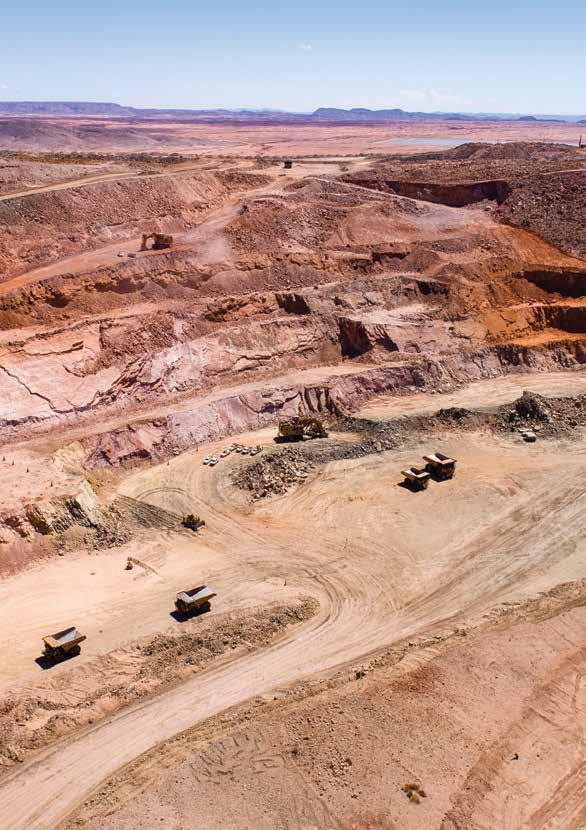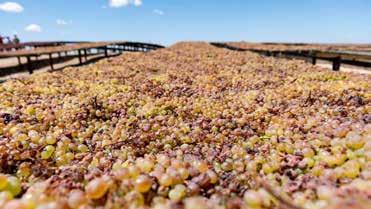
2 minute read
MINING: A CATALYST TOWARDS ECONOMIC DEVELOPMENT
The Northern Cape has great potential: 80% of the world’s manganese reserve; 95% of South Africa’s diamond output; 13.4% of the world’s lead exports; 93% of South Africa’s lead production; 100% of Tigers Eye reserve and zinc exports account for 13% of global demand.
year also saw a decline of 6% from R204.1-billion that was achieved in Q1 2022. The country accounts for 91% of known global reserves of the platinum group metals (PGMs), 75.2% of chrome, 30.2% of manganese, 17.5% of vanadium and 13.8% of gold reserves. Thus, with exploration continuing, there is room for more reserves to be discovered, making use of the latest technologies and methods, further improving the country’s position in the mineral industry, globally.
South Africa’s mining industry continues to play a vital economic and socio-economic role in the country’s development. Furthermore, the country sits on extensive reserves and remains a world leader in the production of many minerals, despite recently producing reduced sales revenues. The country continues to have the potential to supply a large share of the global demand for many commodities.
The country’s mining industry makes a significant direct contribution to GDP. However, the contribution has been on the decline from 0.2% in 2015 to -0.3% in 2022. However, in 2021 the mining industry contributed a remarkable 0.5% following the easing of strict Covid-19 measures. In 2022, mining contributed R204.2-billion or -0.7% to gross domestic product from R219.5-billion in 2021, a significant decrease of R15.3-billion. This can be attributed to the challenges of electricity supply that put enormous strain on the economy. In the first quarter 2023, the mining industry grew by 0.9% to R200.1-billion from R198.3-billion that was achieved in the last quarter of 2022. The mining sector contributed an average of 0.04% to the GDP’s total value of R4.6-trillion. In the first quarter, the total sales revenue declined slightly by 1.8% to R191.9-billion quarter-on-quarter from R195.5-billion for Q4. This was due to a decline on sales quantities. Year-on-
The mining industry contributed about R880-billion in 2022, as compared to about R846-billion in 2021, a 4.1% increase. Despite the rail and road infrastructure constraints that resulted in the industry failing to take advantage of improved prices and demand for the year 2022. In the first quarter 2023, mining employment increased by 0.6% to an average of 476 634 of employees from 473 867 of employees that was recorded in Q4 2022. Earnings also increased by 1.2% to R46.2-billion from R45.6-billion in Q4 2022.
The Northern Cape is one of the South African provinces that has a great mining potential for economic development. It is characterised by diamonds, iron ore and manganese. Apart from these minerals, the province is rich in new technology minerals such as zinc, nickel, copper and cobalt. The Northern Cape is also home to most of South Africa’s renewable projects.
Industrial clusters in the Northern Cape include the Namakwa SEZ which will promote mineral beneficiation, the Kathu Industrial Park which will promote a large range of business opportunities as well as the deepwater port at Boegoebaai and the Upington Industrial Park to promote manufacturing, particularly the manufacturing of solar-power components. Therefore, there is a renewed call for mines to use their social licences to increase economic development and address issues including housing, skills, local enterprises and services in the areas in which they operate in order to grow the local economies.

Source: UNCTAD 2020














